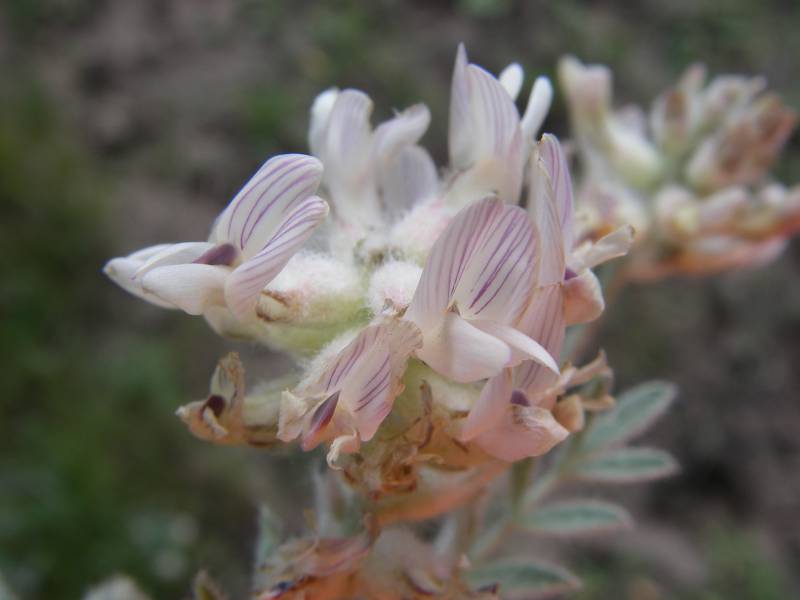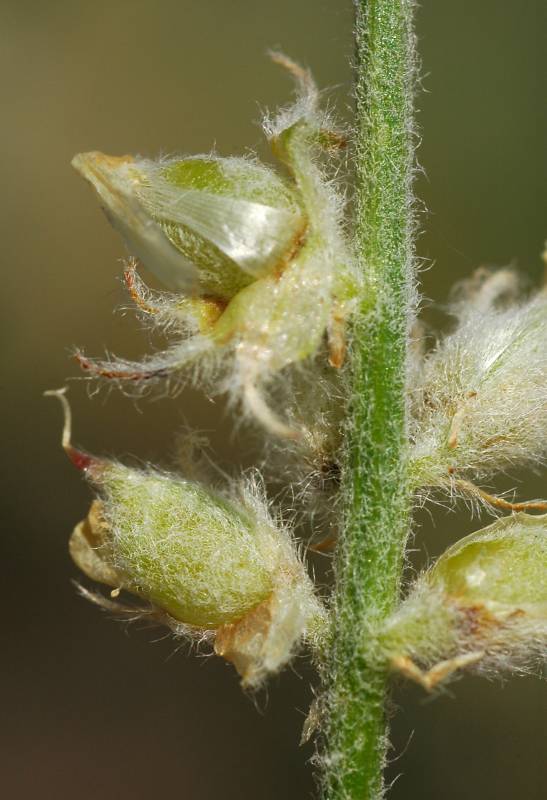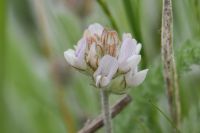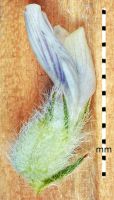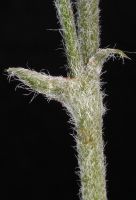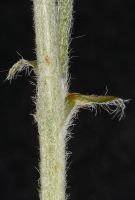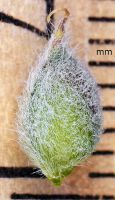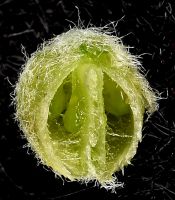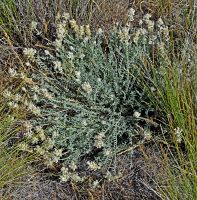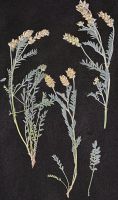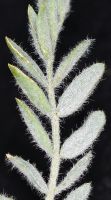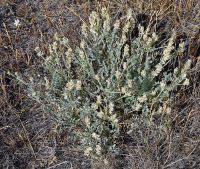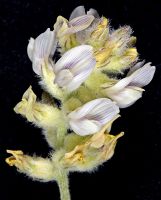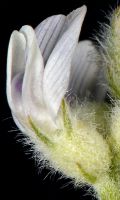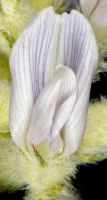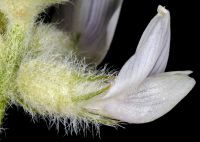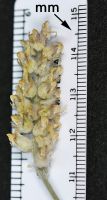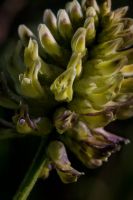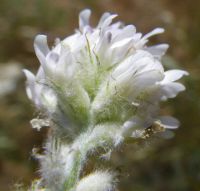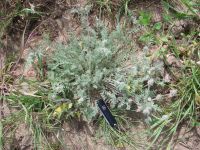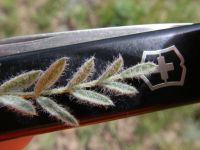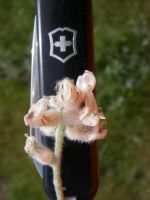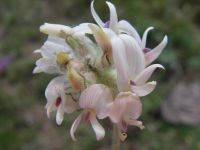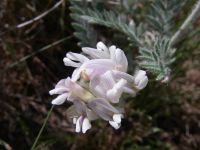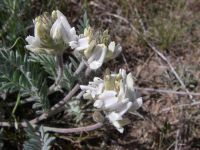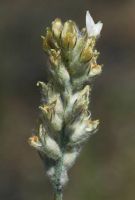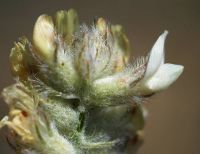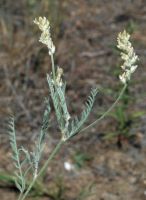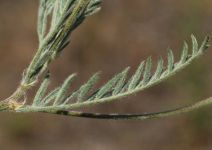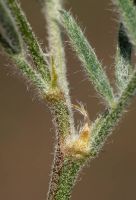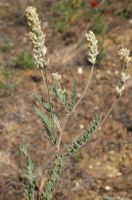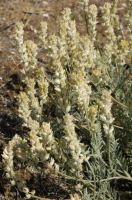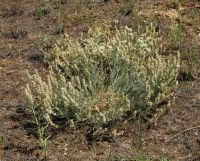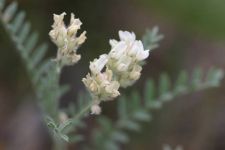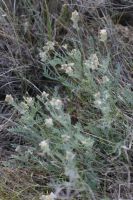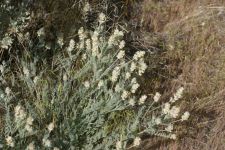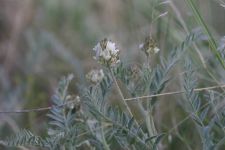Distribution: Occurring east of the Cascades crest in Washington; central Washington to northeast Oregon, east to western Idaho.
Habitat: Sagebrush and grasslands in the foothills and valleys.
Flowers: May-June
Origin: Native
Growth Duration: Perennial
Conservation Status: Not of concern
Pollination: Bumblebees, bees, butterflies
Gray-woolly perennial from a taproot and branched crown, the several erect to decumbent-based stems 1-4 dm. tall.
Leaves alternate, pinnate, 5-12 cm. long; leaflets 15-27, linear-elliptic to oblong-lanceolate, 5-18 mm. long; stipules linear, 4-8 mm. long.
Inflorescence of 15- to 60-flowered, spike-like racemes, on peduncles usually exceeding the leaves; flowers spreading to erect, 10-14 mm. long, nearly sessile, the pedicles stout, less than 1 mm. long; calyx densely woolly, 2/3 as long as the corolla, the 5 linear teeth equal to the tube; banner obovate, white but bluish lined; wings white, slightly exceeding the rounded, purplish-tipped keel; stamens 10.
Pod sessile, densely woolly, ovoid, 4-7 mm. long, leathery, 2-celled by complete intrusion of the lower suture.
Publication: Proc. Amer. Acad. Arts 6: 524. 1865. 1865.
PNW Herbaria: Specimen records of Astragalus spaldingii in the Consortium of Pacific Northwest Herbaria database
WA Flora Checklist: Astragalus spaldingii checklist entry
OregonFlora: Astragalus spaldingii information
E-Flora BC: Astragalus spaldingii atlas page
CalPhotos: Astragalus spaldingii photos

